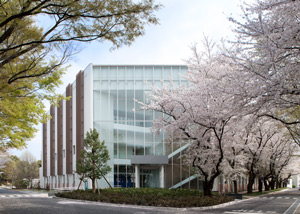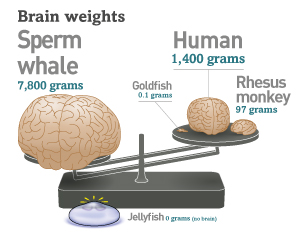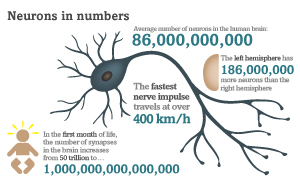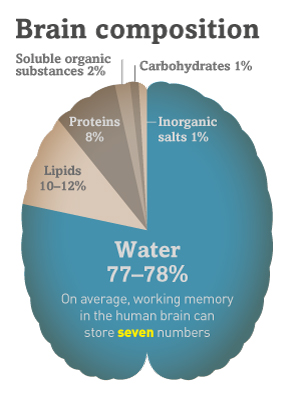Oct. 31, 2014 RIKEN Places Biology
Building neural connections
The BSI Neural Circuit Genetics Research Building at the RIKEN Brain Science Institute is designed to advance research on neural circuits and cognition.
 The open and interactive design of the BSI Neural Circuit Genetics Research Building facilitates researcher collaboration across various brain science disciplines. © 2014 RIKEN
The open and interactive design of the BSI Neural Circuit Genetics Research Building facilitates researcher collaboration across various brain science disciplines. © 2014 RIKEN
The sheer complexity of the brain is astonishing—processing that thought alone involves orchestrated interactions between many elements in the brain, including neurons and their supporting neuroglia. Every feeling, thought and action is processed by a neuronal circuit, each of which sends tens to hundreds of electrical signals a second, sometimes at speeds faster than a race car. The almost hundred billion neurons in the brain fire, even during sleep, which enables vision, movement, thought, emotion and memory.
To understand how the brain controls behavior, scientists explore the function of its neural circuits. It is a daunting task to translate a feeling as intangible as depression into the development and function of circuits or, on an even smaller scale, to the expression of single genes in individual neurons. Advances in the genetic and optogenetic manipulation of model organisms, particularly in mice, combined with state-of-the-art imaging and physiological tools have improved our understanding of the connections that exist between specific areas of the brain. The RIKEN Brain Science Institute is taking advantage of this convergence—in 2011 it established infrastructure to conduct world-class research on genetic approaches for studying neural circuits and behavior.
Space to think
 © 2014 RIKEN
© 2014 RIKEN
The BSI Neural Circuit Genetics Research Building was constructed to facilitate interdisciplinary research in this emerging field. With 9,500 square meters of floor space, interactive laboratories, and state-of-the-art shared facilities, the building is designed to bypass the disciplinary divisions that often exist in the life sciences. For example, laboratories equipped for observing and recording brain activity are closely integrated with areas for studying the behavioral expression of such activity, linking cause with consequence. Hence, researchers based at the building cannot help but engage with colleagues in ways resembling the level of integration in the brain itself.
 © 2014 RIKEN
© 2014 RIKEN
The association between the building and the field of neural circuit genetics is so close that RIKEN inaugurated the building in October 2011 with a symposium entitled “Genes, Circuits and Behavior”. Leaders in the field spoke on the role of neural networks in decision-making, reward-based learning, and the memory of past experiences. The RIKEN Brain Science Institute director and Nobel prizewinner, Susumu Tonegawa, described his vision for the building as a site of new discoveries in molecular and cell biology, electrophysiology, behavior and cognition—with the ultimate goal being the neural circuit basis of brain dysfunction and restoration of healthy function in brain disease.
Research circuits
 Image source: McIlwain, H. & Bachelard, H.S. Biochemistry and the Central Nervous System (1985). © 2014 RIKEN
Image source: McIlwain, H. & Bachelard, H.S. Biochemistry and the Central Nervous System (1985). © 2014 RIKEN
The BSI Neural Circuit Genetics Research Building houses 6 laboratories and approximately 50 researchers, around 30 of whom are from overseas. Yukiko Goda’s laboratory observes synapses—specialized sites of contact and communication between two neurons. By searching for patterns in the formation of synaptic connections, Goda’s team gains insights into dynamic processes such as how small neural networks encode changes in activity. Joshua Johansen’s laboratory studies memory formation by investigating the neural circuits involved in remembering fearful events. Supported by the infrastructure and facilities at the BSI Neural Circuit Genetics Research Building, these teams are making the brain just a little less perplexing.
